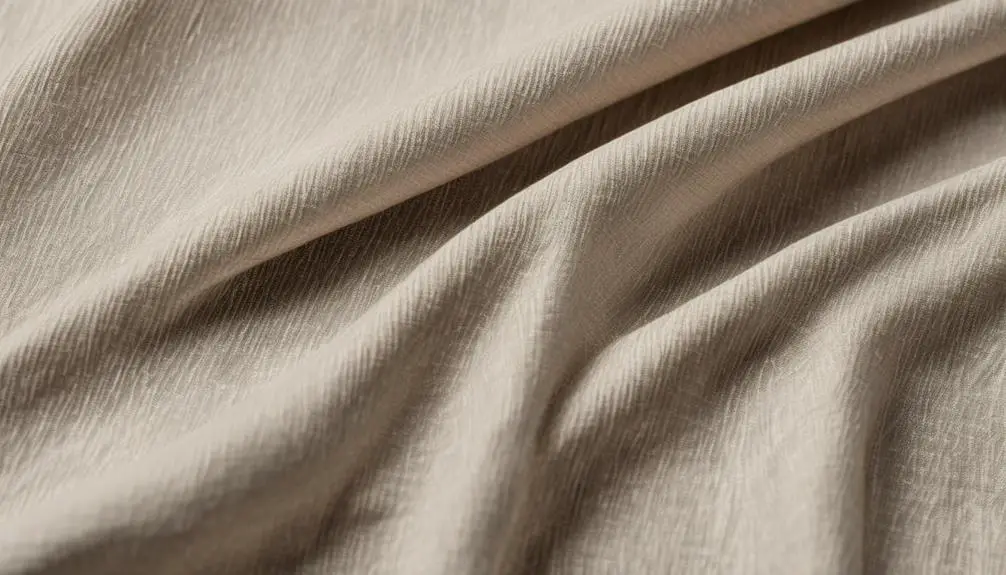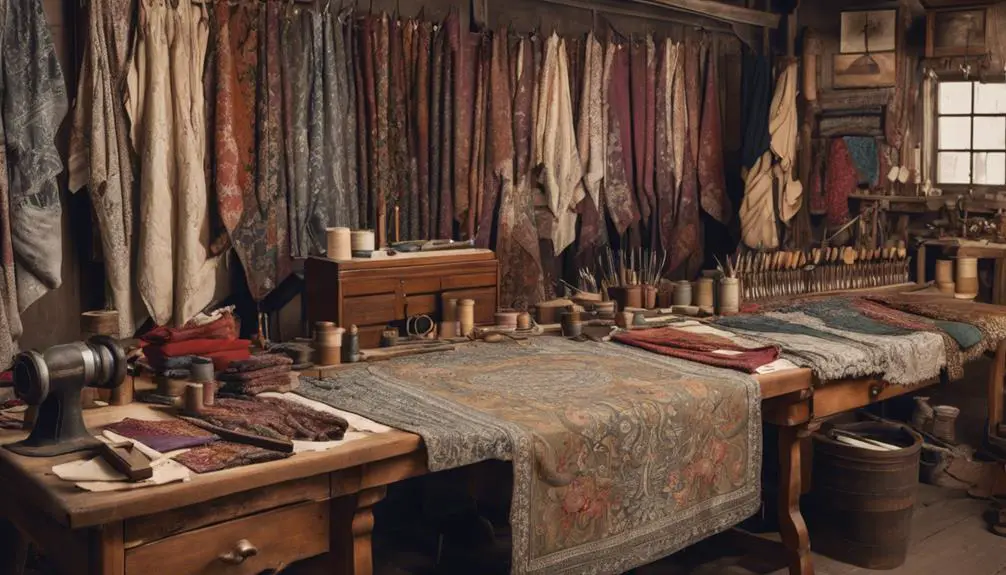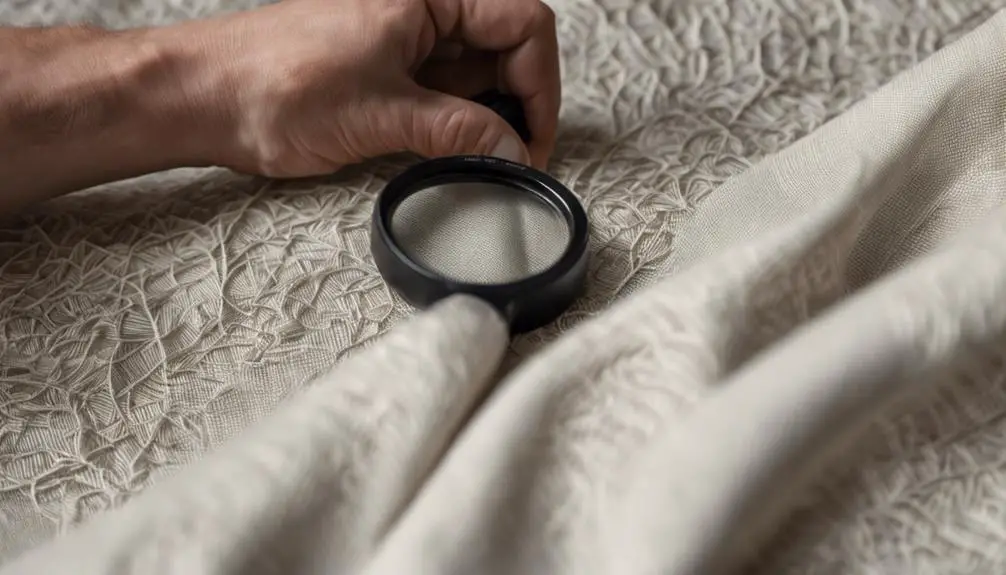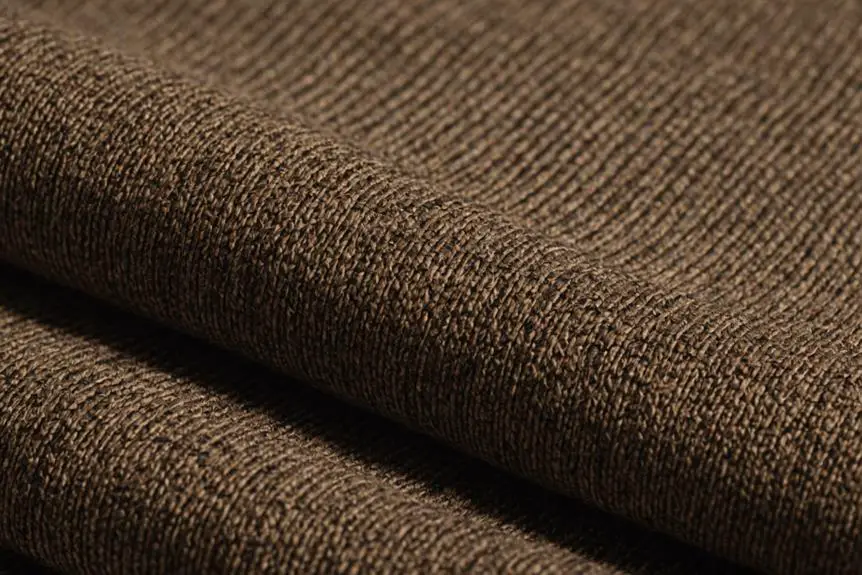When you're trying to identify fustian fabric, there are several key characteristics you can't overlook. Start by feeling the weight; a sturdy texture indicates a cotton and linen blend that stands out. You might notice a brushed surface with ridges, which can be reminiscent of corduroy. Pay attention to the width, too—fustian typically stabilizes around 28 inches. These elements are essential, but understanding the fabric's historical context and usage could reveal even more about its significance. What else might you discover about this intriguing fabric?
Understanding Fustian Fabric

Fustian fabric, often overlooked, offers a fascinating blend of cotton and linen that's both durable and versatile. You might be wondering, "What's so special about this fabric?" Well, fustian has a rich history, evolving from medieval clothing to modern utility wear. It's not just any cotton fabric; it's got character!
One cool thing about fustian is its texture. It's typically brushed and has a twill pattern, giving it a unique feel that's pretty similar to corduroy. Imagine snuggling into a cozy jacket made from it—you'll definitely feel that warmth and comfort! Plus, it's been a favorite among laborers since the 19th century, thanks to its durability and affordability. Who doesn't love a fabric that can stand up to hard work?
Now, let's talk about how it's made. The production technique called fustian cutting uses a special knife to sever the weft threads. This creates those distinctive ridges you see in corduroy. It's like the fabric's own little secret! After processing, fustian stabilizes to about 28 inches wide, making it easy to work with.
Key Characteristics to Look For
When you're on the lookout for fustian fabric, there are a few key characteristics that can help you identify it. First off, you'll want to feel the fabric's weighty texture. Fustian is made from a blend of cotton and linen, which gives it that sturdy vibe. It's like wearing a soft shield! The width usually stabilizes around 28 inches, so keep an eye on that too.
Next, look for the brushed pile on the surface. This is a big clue that you're dealing with fustian. You might even spot some ridges, especially if you see something resembling corduroy—about seven ridges per inch, to be exact. Isn't that cool?
Another thing to check is the fabric's stiffness. Historical fustian often has a bit of a firm feel, thanks to various back fillings used in its production. This characteristic sets it apart from softer cotton/linen blends, which can feel more like a cloud.
Lastly, remember that fustian is known for its durability and stain-hiding properties. It was a favorite for workwear, so if you're after something that can take a beating while looking good, this is your fabric! Keep these traits in mind, and you'll be spotting fustian fabric like a pro in no time. Happy hunting!
Historical Context and Usage

During its evolution, fustian fabric became essential in various social contexts, reflecting the textile demands of different eras. You might be surprised to learn that fustian first popped up during the late Middle Ages and Renaissance! It was a blend of cotton and linen, making it a go-to choice for affordable clothing, especially when the fancy fabrics of the time could break the bank.
In the 13th to 14th centuries, you'd see fustian in priests' robes and women's dresses, and it later became a staple for laborers. Can you envision wearing something both durable and stylish? By the 1860s, fustian had evolved even further and was specifically known as any cut weft cotton fabric, particularly in Lancashire cotton towns.
But wait, there's more! In the 16th century, fustian gained fame in Genoa. Imagine this: workers wearing fustian made from cotton yarns, loving its durability and ability to hide stains. Talk about practical fashion!
You might find it interesting that the term "jean" actually came from fustian. That's right! Late 16th-century English inventories used it to describe fustian fabrics, showcasing its importance in the textile trade between England and Genoa. So next time you see fustian, remember its rich history and how it shaped clothing across different social classes. Isn't it cool to think about what you're wearing?
Fabric Composition and Types
Combining cotton and linen, fustian fabric boasts a unique composition that enhances its durability and texture. You'll love how the cotton weft and linen warp work together to create a fabric that's not only strong but also super soft. This mix makes fustian perfect for everything from historical clothing to modern-day garments. It's like having the best of both worlds!
When you look at fustian, you might notice its brushed surface, especially in that cozy corduroy form. Those distinct ridges? They're created through a special cutting process, giving it an eye-catching look. Did you know that historical fustian often features a twill weave pattern? This sets it apart from simpler cotton or linen fabrics you might come across today.
Modern fustian typically comes in a heavy blend of 50% cotton and 50% linen, and it usually measures around 50 inches in width. This means it's perfect for sewing authentic garments—just think of all the cool stuff you could create! Whether you're making a vintage-inspired outfit or something fresh and trendy, fustian will give your project that extra flair.
Tips for Accurate Identification

To accurately identify fustian fabric, start by examining its distinctive blend of cotton and linen. You'll notice that fustian usually has a unique twill pattern, giving it a cool texture. Now, if you want to be a fabric detective, look for that brushed surface! This is especially true for corduroy-style fustian, which often features about seven ridges per inch. It's like a little fabric mountain range!
Next, pay attention to the width. Fustian typically stabilizes to around 28 inches after processing, which is narrower than what you might find in modern cotton fabrics. That's a big clue! Also, don't forget to feel the fabric. Fustian is heavier and more durable than typical cotton blends, making it perfect for workwear and even historical costumes.
Now, let's talk about stiffness. Does the fabric feel a bit stiff? That's a sign it might be fustian. This stiffness comes from various back fillings used during manufacturing, setting it apart from softer cotton or linen fabrics.
Frequently Asked Questions
What Is an Example of a Fustian?
So, what's a fustian? Envision this: heavy cotton and linen blend, perfect for hard-working folks back in the 19th century! You'd find it in breeches and frocks, especially during the Civil War era. Fustian history's pretty cool, right? It's like modern brushed denim, tough and durable. Imagine wearing something that's both practical and stylish! Ever thought about how history shapes our clothes? Fustian's got your back in the fabric game!
What Is the Difference Between Fustian and Corduroy?
So, you wanna know the difference between fustian and corduroy? Well, here's the scoop! Fustian's a general term for various fabric blends, while corduroy's got that cool, ridged texture you can't miss. You'll find corduroy with raised "cords," making it thicker and more durable. Fustian, on the other hand, can come in different weights and styles. Isn't it fascinating how fabrics can have such unique characteristics? What's your favorite?
What Is Fustian Made Of?
So, you're curious about what fustian's made of, huh? Well, fustian's a cool fabric blend, usually mixing cotton and linen. Depending on the type, it can have different proportions, which gives it distinct characteristics. The texture is often enhanced, making it feel comfy yet durable. Plus, it can be heavy for workwear or lighter for everyday clothes. Isn't it neat how a fabric can have so many personalities?
How to Identify Linen Fabric?
When you're on the hunt for linen fabric, there are some cool linen characteristics to spot! First, feel that crisp texture—it's cool to the touch. Check for those natural irregularities in the weave, too; they give it that unique look. And don't forget about the wrinkles—they're a telltale sign! If you burn a thread, it'll smell like burning paper. So, ready to rock that linen? You've got this!
Conclusion
So, ready to plunge into the world of fustian fabric? Remember, it's all about that heavy texture, brushed surface, and those cozy little ridges. Don't forget to check the width; it's narrower than most fabrics. With these tips, you'll spot fustian like a pro! Whether you're crafting or just curious, knowing this fabric's secrets is pretty cool, right? Now go out there and impress your friends with your newfound fabric knowledge!




Plunge into the stunning sandbox of EVE Online. Forge your empire today. Explore alongside millions of pilots worldwide. [url=https://www.eveonline.com/signup?invc=46758c20-63e3-4816-aa0e-f91cff26ade4]Start playing for free[/url]